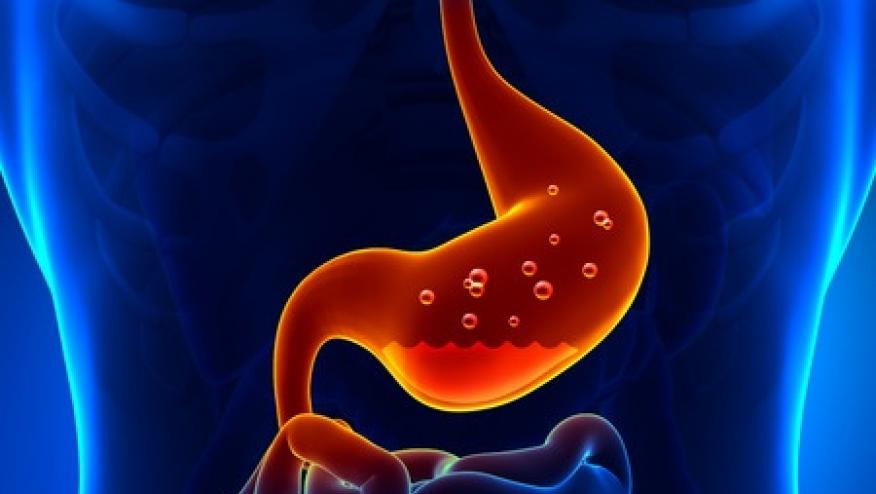PPI Safety Issues Save

There are more than 11 million proton pump inhibitor (PPI) prescriptions written each year in the United States. While these agents have dramatically changed the management and outcome of upper gastrointestinal (GI) erosive and inflammatory disorders, their use has not been without safety concerns. Although they have been commercially available for more than 25 years, the last few years has seen a peak in publicized safety reports, often leading patients to either fret or stop these medications.
A recent review of “25 years of Proton Pump Inhibitors” details the history and use of PPIs in the USA. There are six PPI agents available, half as over-the-counter formulations and most are available as generics or as IV preparations. There are minor differences in these agents, such that they share the same clinical indications and many of the same safety concerns. (Citation source: http://buff.ly/2iLxPDF)
PPIs are indicated for the treatment of:
- Healing of peptic ulcer disease (PUD)
- Treatment of active gastric or duodenal PUD and GI bleeding
- Chronic gastroesophageal reflux
- Prevention of NSAID-induced gastric ulcers
- Treatment of active Helicobacter pylori infection
- Treatment of erosive esophagitis
- Treatment of hypersecretory conditions (Zollinger-Ellison syndrome)
Safety Concerns
Gastric acidity: PPIs will decrease gastric acid and may affect drug blood levels where absorption is acid dependent, including several antiretroviral and cancer therapy drugs. Other drugs, such as digoxin, may be absorbed more extensively when gastric acid is reduced; thus, digoxin toxicity may occur with PPI use. Warfarin's effect also is increased in patients taking PPIs. Decreased gastric acid can lower absorption of vitamin B12, calcium, iron, and magnesium.
Hypomagnesemia: A meta-analysis of 9 studies (n=109,798) found a 40% increased risk of hypomagnesemia with PPI compared with nonusers. If severe, hypomagnesemia may lead to muscle weakness, tetany, convulsions, arrhythmias. An FDA warning in 2011 said that PPI may cause low serum magnesium levels if taken for prolonged periods, and noted that magnesium supplementation alone may not correct low serum magnesium levels unless the PPI is discontinued. Thus, there is a small, but statistically significant risk of hypomagnesemia with prolonged PPI use.
Infections: Due to the lowering of gastric acidity, there is a higher risk of Clostridium difficile infection and community-acquired pneumonia (not hospitalized) among PPI users. A meta-analysis that included 39 studies showed a 74% higher risk of developing C difficile infection, as well as 2.5-fold higher risk of recurrent C difficile infection among PPI users. In 2015, the FDA published a safety warning on the association between PPIs and C difficile infection.
Renal disease: Recent large reviews and metanalysis show that there is a 50% increased risk (OR 1.50) of chronic kidney disease and an increased risk of acute kidney disease or acute interstitial nephritis (OR 2.50-3.0) with chronic PPI use. The ARIC (n=10,439 patients) ARIC and Kiesinger studies (n=248,751) followed patients for 6.2-13.9 years and found more CKD in PPI users (11-17% risk of CKD). The risk of CKD in non-users was 11-12%. When PPI users were compared to those on H2 blockers, the risk of CKD yielded a HR 1.39. Twice daily PPI users had a slightly higher rate (adjusted HR, 1.46) compared to daily dosing (adjusted HR, 1.15). PPI may lead to CKD through recurrent acute kidney injury or hypomagnesaemia. Additional studies are needed to confirm this risk.
Acute kidney injury (AKI): was 2.5- and 3-fold higher in PPI users compared with nonusers. However, in the larger, 6 yr. Geisinger study the risk of AKI was 4% in both PPI users and non-users. In the ARIC study, non-users had a 4% incidence of AKI, while those on PPI had a 13% risk. It is presumed that most AKI is related to acute interstitial nephritis. Risks may be higher in the elderly or those on NSAIDs.
Osteoporosis: PPIs may decrease bone density and increase fracture risk by reducing intestinal calcium absorption. In 2010, the FDA published a safety alert on the possible increased risk of fractures among PPI users. A recent meta-analysis of 18 studies (n=244,109 fractures) showed a 26% higher risk of hip fracture, a 58% higher risk of spine fracture, and a 33% higher risk for any fracture at any site among PPI users.
Others: there are conflicting results about a potential risk for CV events in PPI users taking clopidogrel.
Risk Reduction
Given these impactful risks, clinicians should try to use the lowest possible dose of PPI and to discontinue PPI therapy if it is not essential. The benefits of PPI therapy must be weighed against their potential contribution to harm in susceptible individuals. Some patients may benefit from intermittent or on-demand regimens may be sufficient to manage problems or control symptoms.










If you are a health practitioner, you may Login/Register to comment.
Due to the nature of these comment forums, only health practitioners are allowed to comment at this time.